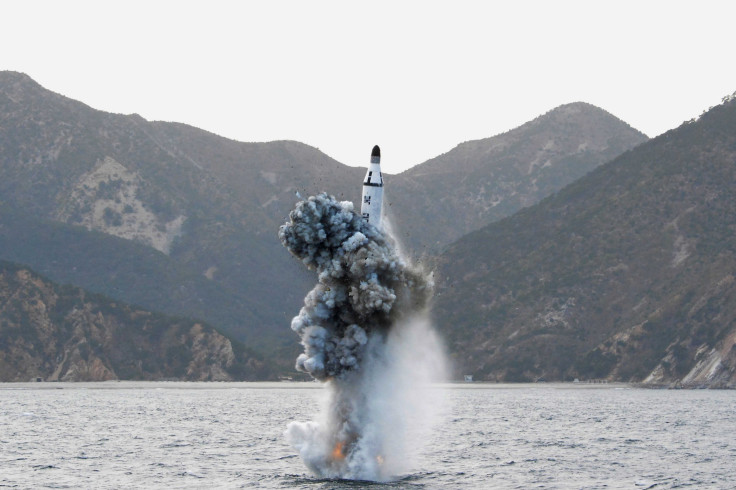North Korea Fires Submarine-Launched Ballistic Missile Amid Seoul-Washington Annual Military Drills

North Korea test-fired a ballistic missile Wednesday from a submarine off its east coast amid heightened tensions in the Korean peninsula. According to the South Korean defense ministry, the submarine-launched ballistic missile (SLBM) was fired at around 5:30 a.m., local time, (4:30 p.m. EDT) from near the coastal town of Sinpo in South Hamgyong province.
The projectile, which fell into waters inside Japan's air defense identification zone, flew about 500 km (311 miles) — a distance regarded by the South Korean military as a successful flight. Wednesday’s missile launch, which reportedly completed the longest flight among any known North Korean SLBMs, came two days after South Korea and the United States kicked off their annual military drills Monday to prepare troops to better counter potential threats from Pyongyang.
“North Korea's launch of the SLBM seemed to be aimed at raising military tension in response to the Seoul-Washington military drill,” Yonhap News Agency quoted South Korea's joint chiefs of staff as saying. “We will sternly and strongly respond to any provocation by North Korea.”
On Tuesday, North Korean ambassador to the United Nations, Ja Song-nam, condemned the ongoing joint military drills and claimed that such exercises are bringing the Korean peninsula to the brink of war. The diplomat also called for an emergency Security Council meeting to address the issue.
According to experts, the distance the missile is claimed to have covered indicated that North Korea has been successful in its efforts to develop a submarine-launched missile system. The South Korean military has also reportedly said that Pyongyang’s “SLBM technology appears to have progressed.”
North Korean’s successful launch of an SLBM has also raised concerns that it could make it difficult for the Terminal High Altitude Area Defense (THAAD) system — it is expected to be deployed in South Korea by the end of 2017 — to intercept a North Korean missile as it can be fired underwater anywhere near the South.
While South Korean military expects North Korea to be able to ready SLBMs for combat use within two to three years, some experts believe that the latest launch could enable the reclusive nation to make a similar deployment as early as 2017.
Meanwhile, the Japanese government also condemned Wednesday’s missile launch by North Korea and said that it had lodged a strong protest through diplomatic channels.
“This poses a grave threat to Japan's security, and is an unforgivable act that damages regional peace and stability markedly,” Reuters quoted Japanese Prime Minister Shinzo Abe as saying to reporters.
Earlier this month, North Korea test-fired two ballistic missiles in an apparent response to the scheduled deployment of the THAAD missile defense system in South Korea’s southern county of Seongju. The U.S. military said at the time that one of the two missiles exploded right after the launch, while the other landed into the sea off North Korea’s east coast.
An official at South Korea’s joint chiefs of staff said following the launches that the move showed North Korea’s “ambition to attack neighboring countries.”
© Copyright IBTimes 2024. All rights reserved.












